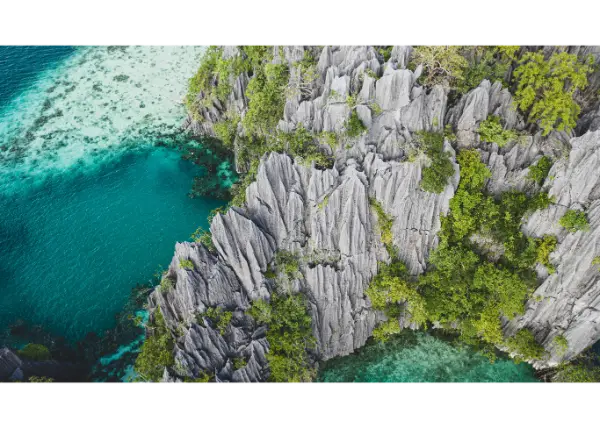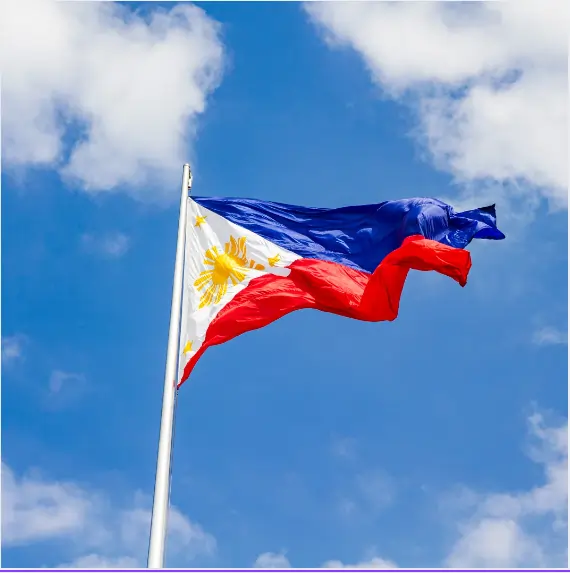An Island Nation of Stunning Beaches, Rich Culture, and Warm Hospitality

Curious about the Philippines? This Southeast Asian country is known for its tropical beauty, vibrant festivals, and friendly locals. With over 7,600 islands, the Philippines offers everything from breathtaking beaches and diving spots to historical sites and bustling cities.
Here’s an insider look at Firstchoicereview.com of what makes the Philippines a top destination for travelers, investors, and adventurers alike.
Why Visit the Philippines? Top 3 Benefits
- Stunning Beaches and Marine Biodiversity
A home to some of the world’s best beaches, including Boracay, Palawan, and Siargao. It’s a paradise for beach lovers and water sports enthusiasts, with top spots for snorkeling, diving, and surfing.
Example: Palawan’s El Nido is famous for its limestone cliffs and hidden lagoons, making it a top destination for nature lovers. - Unique Culture and Friendly Locals
The country’s mix of Filipino, Spanish, and American influences has created a vibrant, unique culture. Filipinos are known for their warmth and hospitality, often making travelers feel like family. Festivals like Sinulog and Ati-Atihan showcase the country’s rich cultural heritage.
Tip: Try to time your visit around one of the many festivals for a true taste of Filipino culture. - Affordable Travel and Adventure
Highly affordable, making it ideal for budget travelers. Whether you’re staying at a beach resort, island-hopping, or exploring the cities, you can enjoy world-class experiences without breaking the bank.
Recommendation: Take advantage of affordable local transportation options like jeepneys and tricycles to get around easily and cheaply.
Geography and Climate of the Philippines
An archipelago located in the Pacific Ocean, bordered by the South China Sea and the Philippine Sea. The country’s geography is diverse, featuring mountains, rainforests, volcanoes, and pristine beaches.
Climate:
- Dry Season: November to April, ideal for visiting beaches and outdoor activities.
- Wet Season: May to October, when monsoon rains can impact some travel plans.
Best Time to Visit: The dry season from November to April offers the best weather for beach trips and outdoor exploration.
Philippines’ Rich Culture and Traditions
The Philippines has a diverse history shaped by indigenous customs, Spanish colonization, and American influence. This blend is reflected in its architecture, religion, festivals, and daily life.
Cultural Highlights:
- Festivals: The country is known for vibrant festivals like Sinulog in Cebu and Ati-Atihan in Kalibo, where locals wear colorful costumes and celebrate with music and dance.
- Language: Filipino (based on Tagalog) and English are the official languages, making it easy for travelers to communicate.
- Religions: Catholicism is the predominant religion, due to Spanish influence, but there are also Muslim communities, especially in the southern regions.
Must-See Historical Sites:
- Intramuros: Known as the “Walled City” in Manila, Intramuros is a relic of Spanish colonial rule, with old churches and forts.
- Vigan: A UNESCO World Heritage Site, this city offers a glimpse of Spanish colonial architecture and cobblestone streets.
Philippines’ Economy and Key Industries
Has a growing economy, primarily driven by services, agriculture, and overseas remittances from Filipino workers abroad.
Key Economic Sectors:
- Agriculture: Rice, coconut, and sugarcane are major products.
- Tourism: Tourism is a major source of revenue, attracting millions each year to its natural and cultural sites.
- Business Process Outsourcing (BPO): The Philippines is a global leader in outsourcing, providing call center and IT services to companies worldwide.
Future Growth: With continuous infrastructure development and foreign investment, the Philippines is expanding its economic potential, especially in renewable energy and technology.
Cuisine: Flavors of the Philippines
The cuisine of the Philippines is a unique mix of sweet, savory, sour, and spicy flavors. Influenced by indigenous, Spanish, Chinese, and American dishes, Filipino food offers a variety of delicious experiences.
Popular Dishes:
- Adobo: A savory dish made of marinated meat in vinegar, soy sauce, and spices.
- Sinigang: A sour soup made with tamarind, often cooked with pork or shrimp and vegetables.
- Lechon: A whole roasted pig, a festive dish often served at celebrations.
- Halo-Halo: A popular dessert of crushed ice with sweet toppings like fruits, beans, and ice cream.
Street Food: For an authentic experience, try street foods like balut (fertilized duck egg), isaw (grilled chicken intestines), and kwek-kwek (deep-fried quail eggs).
Top Travel Destinations in the Philippines
- Boracay
Known for its powdery white sands and crystal-clear waters, Boracay is perfect for beachgoers and nightlife enthusiasts. Enjoy water sports by day and beach parties by night. - Palawan
Home to El Nido and Coron, Palawan is a paradise of limestone cliffs, turquoise lagoons, and coral reefs. It’s frequently listed among the world’s best islands. - Cebu
Cebu offers a mix of historical sites, waterfalls, and island-hopping experiences. It’s also famous for Whale Shark diving in Oslob. - Siargao
A top destination for surfers, Siargao is known for its relaxed vibe and natural beauty. Cloud 9, its famous surfing spot, attracts surfers from around the world. - Bohol
Bohol is known for the Chocolate Hills, a series of geological formations, and the Philippine Tarsier Sanctuary, home to one of the world’s smallest primates.
Quick Pros and Cons of Visiting the Philippines
Pros:
- Affordable: Budget-friendly options for accommodations, food, and activities.
- Friendly locals: Known for their hospitality, locals make visitors feel welcome.
- Diverse destinations: From beaches to mountains and vibrant cities.
Cons:
- Weather can be unpredictable: The rainy season may impact travel plans.
- Travel between islands: Island hopping can take time due to limited transport options.
FAQs for First-Time Travelers
- Is the Philippines safe for tourists?
Yes, the Philippines is generally safe, though it’s best to be cautious in crowded areas and to stay updated on travel advisories. - What is the best time to visit?
November to April is ideal, especially for beach and outdoor activities. - What languages are spoken?
Filipino and English are widely spoken, making communication easy for travelers.
Tip: Download an offline map and learn a few basic Filipino phrases for easier navigation and a warmer local experience.
Conclusion: Why the Philippines Should Be on Your Travel List
The Philippines offers a unique blend of natural beauty, rich culture, and warm hospitality. With its stunning beaches, friendly locals, and affordable travel options, it’s no wonder this island nation is a favorite among tourists worldwide. Whether you’re after adventure, relaxation, or cultural exploration, the Philippines has something for everyone.
Ready to explore? From the scenic shores of Palawan to the historical streets of Manila, the Philippines promises unforgettable experiences at every turn.
Source
- Britannica: Philippines – https://www.britannica.com/place/Philippines
A comprehensive overview of the Philippines’ geography, history, culture, and government. - Philippines Department of Tourism – https://www.tourism.gov.ph/
The official tourism site provides details on popular destinations, travel advisories, and cultural insights for visitors. - World Bank: Philippines Overview – https://www.worldbank.org/en/country/philippines
Offers an in-depth look at the Philippines’ economy, development, and key sectors.

